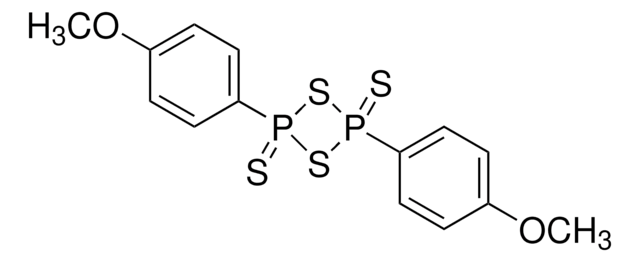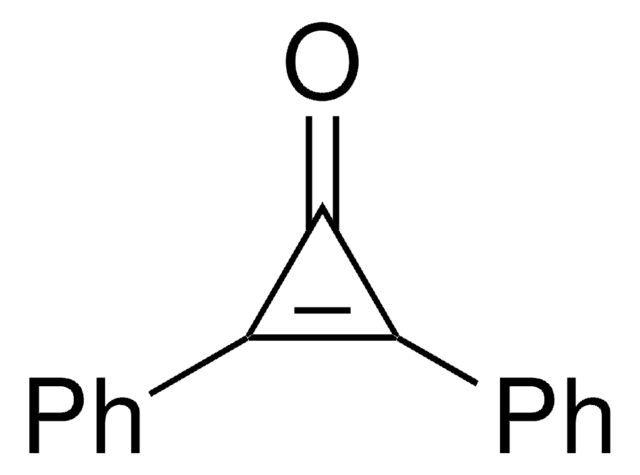339792
3,4-Dibutoxy-3-cyclobutene-1,2-dione
98%
Sinónimos:
Dibutyl squarate
About This Item
Productos recomendados
assay
98%
form
liquid
refractive index
n20/D 1.494 (lit.)
bp
139 °C/0.5 mmHg (lit.)
density
1.047 g/mL at 25 °C (lit.)
SMILES string
CCCCOC1=C(OCCCC)C(=O)C1=O
InChI
1S/C12H18O4/c1-3-5-7-15-11-9(13)10(14)12(11)16-8-6-4-2/h3-8H2,1-2H3
InChI key
XBRWELTXMQSEIN-UHFFFAOYSA-N
Categorías relacionadas
General description
Application
signalword
Warning
hcodes
Hazard Classifications
Eye Irrit. 2 - Skin Irrit. 2 - Skin Sens. 1 - STOT SE 3
target_organs
Respiratory system
Storage Class
10 - Combustible liquids
wgk_germany
WGK 3
flash_point_f
235.4 °F - closed cup
flash_point_c
113 °C - closed cup
ppe
Eyeshields, Faceshields, Gloves, type ABEK (EN14387) respirator filter
Certificados de análisis (COA)
Busque Certificados de análisis (COA) introduciendo el número de lote del producto. Los números de lote se encuentran en la etiqueta del producto después de las palabras «Lot» o «Batch»
¿Ya tiene este producto?
Encuentre la documentación para los productos que ha comprado recientemente en la Biblioteca de documentos.
Nuestro equipo de científicos tiene experiencia en todas las áreas de investigación: Ciencias de la vida, Ciencia de los materiales, Síntesis química, Cromatografía, Analítica y muchas otras.
Póngase en contacto con el Servicio técnico









